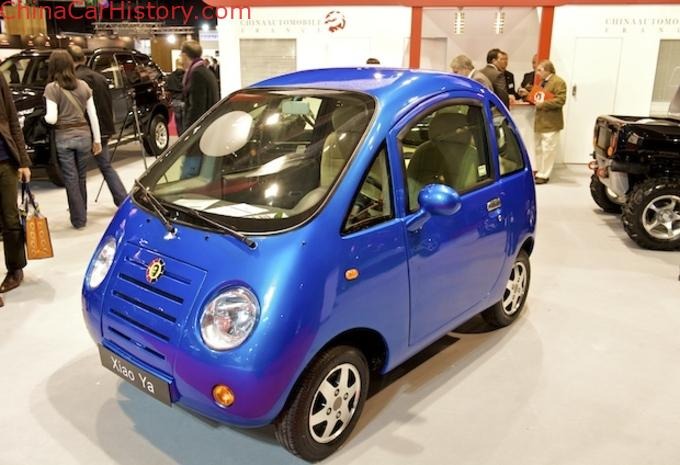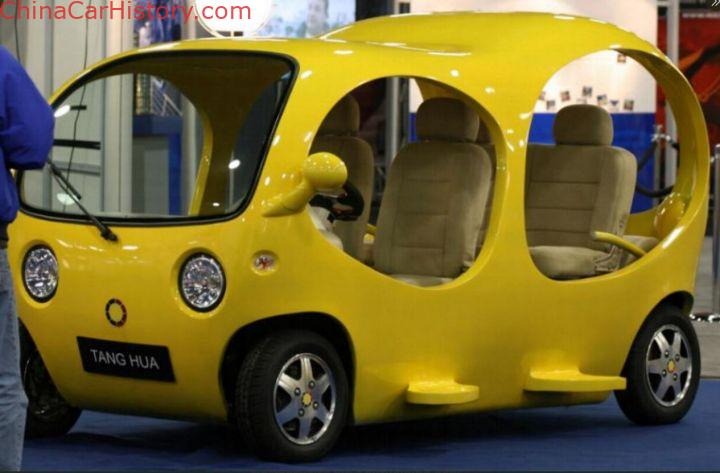This is the first car of the Chinese Tanghua (唐华) company. Interestingly, the company’s history began eight years before its official establishment. In June 1994, Mr. Li Guangming unveiled his first car, Xiaoya (小雅), at the Beijing International Automobile Expo.
It was the adorable little red car with an electric motor that we would now classify as a low-speed electric vehicle (LSEV). The name, which roughly translates to “little elegance”, makes sense. Unfortunately, the car was too ahead of its time, so it never took off.
The exterior dimensions were 2650 mm (L) x 1540 mm (W) x 1540 mm (H), with a wheelbase of 1680 mm. The car had a range of 120 kilometers and a top speed of 45 km/h.
Beijing Lishi Guangming Automobile Design Company, or Li Shi Guang Ming Automobile Design as it was later known, would be established in 2002, 8 years later after the premiere of the founder’s first car.

2005 version
In 2005, the company presented another version of Xiaoya, but this one appears to be a completely new model rather than a modified original. It was shown at the 8th China Beijing International Science and Technology Industry Expo in May 2005. Since this wasn’t a car show, coverage of the car was quite limited.
At the 2005 Tanghua booth, picture provided by Erik van Ingen Schenau, the car stood alone. It had a very unusual door setup, with the B-pillar positioned at a 45° angle. Overall, the interior seemed quite cramped, and I doubt even children could get in comfortably.
Some specifications were reported: dimensions (LxWxH) of 2.3 x 1.3 x 1.5 meters, a top speed of 50 km/h and a range of 110 km on a full charge. The estimated price was around 18,000 yuan.
2006 version
A year later, at the Science and Technology Industry Expo (instead of the big Beijing show that year), Mr. Li introduced another version of Xiaoya.
This new version closely resembled the original car, but with revised details and a slightly smaller size. The car dropped the impractical pair of rear doors and featured a simple but cute face. It was reported that the car could be launched in October of the same year, with prices ranging between 18,000 and 23,000 yen, depending on the trim.
It was powered by a 2.5 kW electric motor, giving it a top speed of 45 km/h, or 65 km/h with the speed limiter removed. Acceleration from a standstill to 40 km/h would take about 42 seconds, which feels agonizingly slow. Its power was stored in a lead-acid battery with a capacity of 120V, which was said to have a range of 260 kilometers, quite impressive for a car of this type.
Its exterior dimensions were 2480mm × 1392mm × 1580mm (LxWxH), with a wheelbase of 1500mm. The curb weight was 700 kilos. The battery life was said to be 800 charge cycles, and it would take between 5 and 7 hours to charge from a regular 220V outlet. Unusually for an EV, the car had a transmission with two forward speeds and reverse.




















You must be logged in to post a comment Login